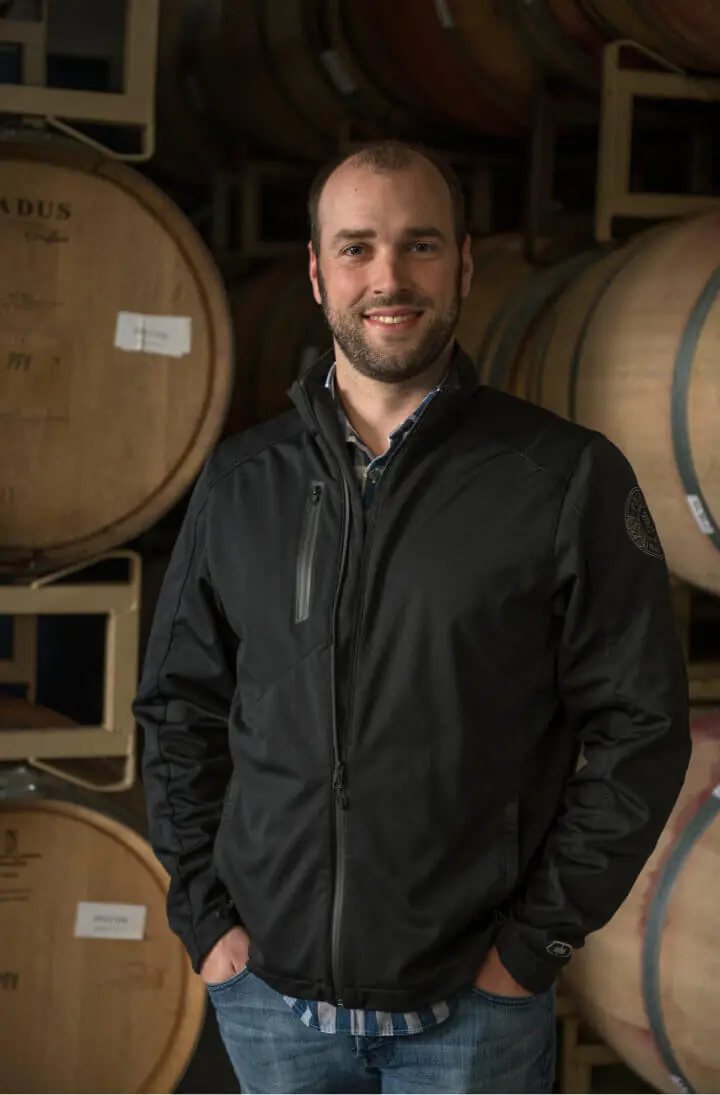Sixmilebridge Winery is located in West Paso Robles, along Peachy Canyon Road. Their small-lot Cabernet Sauvignon and other Bordeaux varieties come from organically farmed grapes sourced solely from their two organic, high-elevation estate vineyards, Maidie and Grace, in Paso's Adelaida District AVA.
I was invited to take part in a virtual experience to mark the one-year anniversary of their tasting room. Proprietors Jim and Barbara Moroney, winemaker Anthony Yount and his wife, vineyard manager Hillary Yount were on hand for the Zoom event. Publicist Stacey Jacob said the tasting room "opened very quietly" during the pandemic. No small feat, in a time when established businesses were having trouble just staying open.
Anthony says the two vintages of their Estate Cuvée sampled in the event are "similar in blend, but not in flavor." He feels the cuvée is the purest expression of what the vineyard has to offer in each vintage. He credits the elevation and the limestone soil for both making contributions to what can be a rustic feel in the wine. It is that rusticity which draws me over and over again to Paso Robles Cabernet Sauvignon.
Jim commented that a lot of the limestone on the property is tinted a pink, or peachy, color due to the influence of iron deposits. Jim also revealed that the winery will be going away from calling their blends cuvées, in favor of more "fanciful" names. He also spoke with pride of the experimentation that his wine team enjoys, for instance that they have planted Semillon and Zinfandel grapes in addition to the other Bordeaux varietals.
Jim also gave a tip of the hat to all the journalists who were on the Zoom call, revealing that he had been the publisher of the Dallas Morning News for 17 years and was in television news before that. By the way, he identified the object on the cuvée labels as the hat of a priest from Sixmilebridge, Ireland in the 19th century.
Sixmilebridge Estate Cuvée 2017The 2017 Sixmilebridge Estate Cuvée was made from 53% Cabernet Sauvignon grapes, 17% Merlot, 12% Malbec, 12% Petit Verdot and 6% Cabernet Franc. Anthony said that he was shocked by how good the Malbec is in the estate. Hillary agreed, saying the Malbec is consistently the best fruit they have. An extremely high heat spike over Labor Day weekend in 2017 apparently softened the tannins somewhat. The wine aged for 26 months in 82% new French oak barriques. Alcohol tips 14.2% abv and the retail price is $85.
The '17 vintage has a deep purple color and a deep, rich nose that shows sweet plum, blackberry and cassis notes. The minerals show up strong as well, providing a savory backdrop for the magnificent fruit. On the palate, the dark fruit flavors are in control as the minerals chase them. The oak treatment comes across perfectly, with a wonderful sweetness imparted along with some touches of leather and tobacco. Acidity is bright and the tannins, while they may have softened, are still quite aggressive upon opening. Let it sit for an hour or so and they tend to settle down.
Sixmilebridge Estate Cuvée 2018The 2018 vintage was made from 48% Cabernet Sauvignon grapes, 33% Merlot, 11% Petit Verdot, 4% Malbec and 4% Cabernet Franc. As in the previous vintage, the wine aged for 26 months in French oak, but only two-thirds of the wood was new. Alcohol is a bit higher, at 14.6% abv, and the retail price is $85.
The 2018 Cuvée is dark in color, possibly a tad lighter than '17, and the nose offers a more savory expression of the black fruit. The leather and tobacco notes stride a little stronger in the '18. Minerality is a big feature in the aroma package. The palate is dark and rich, with that classic Paso limestone chalkiness making an appearance. The acidity is refreshing, and the tannins are a bit softer than the '17, while still offering plenty of pairing potential.
Follow Randy Fuller on Twitter
























